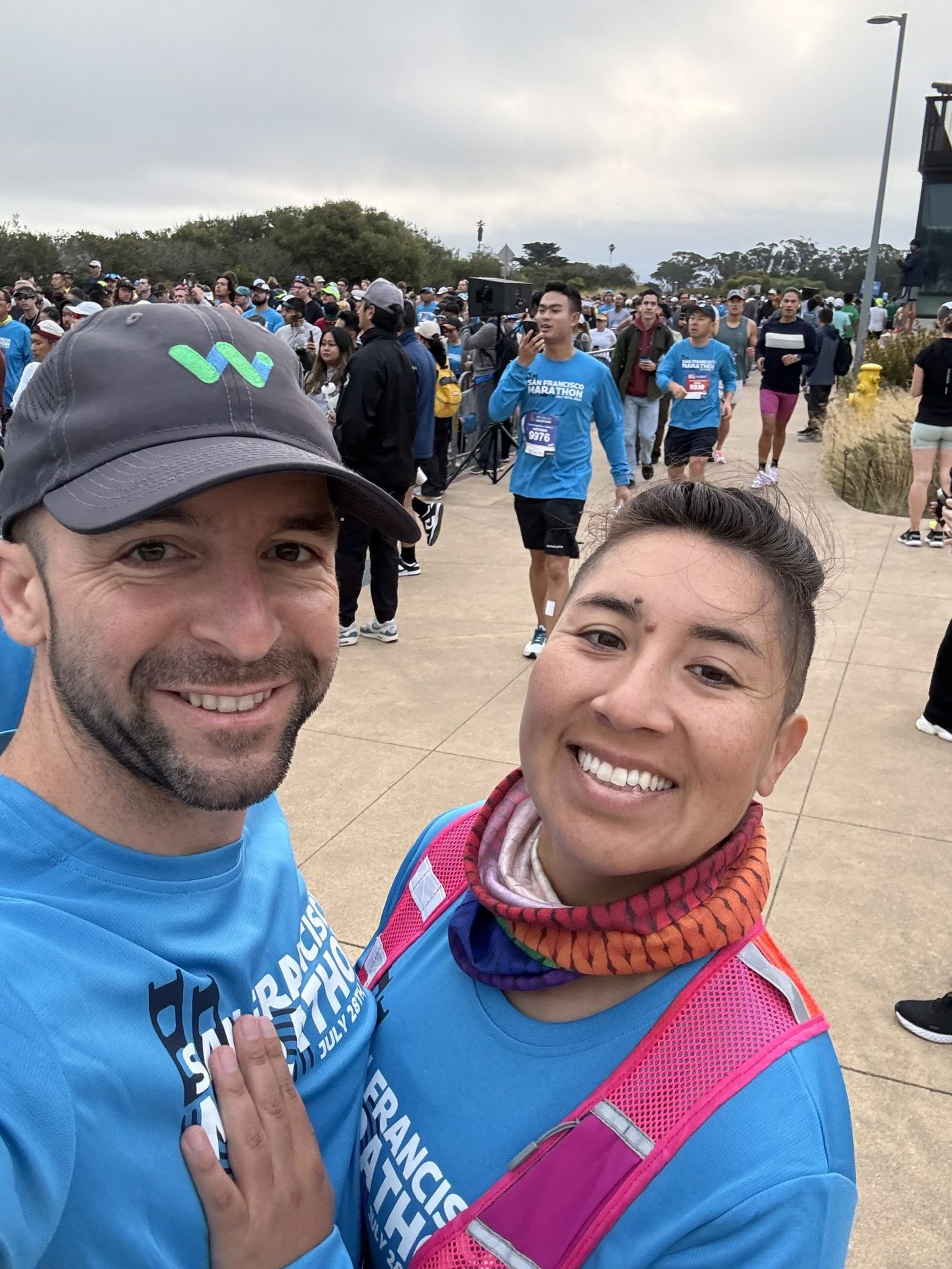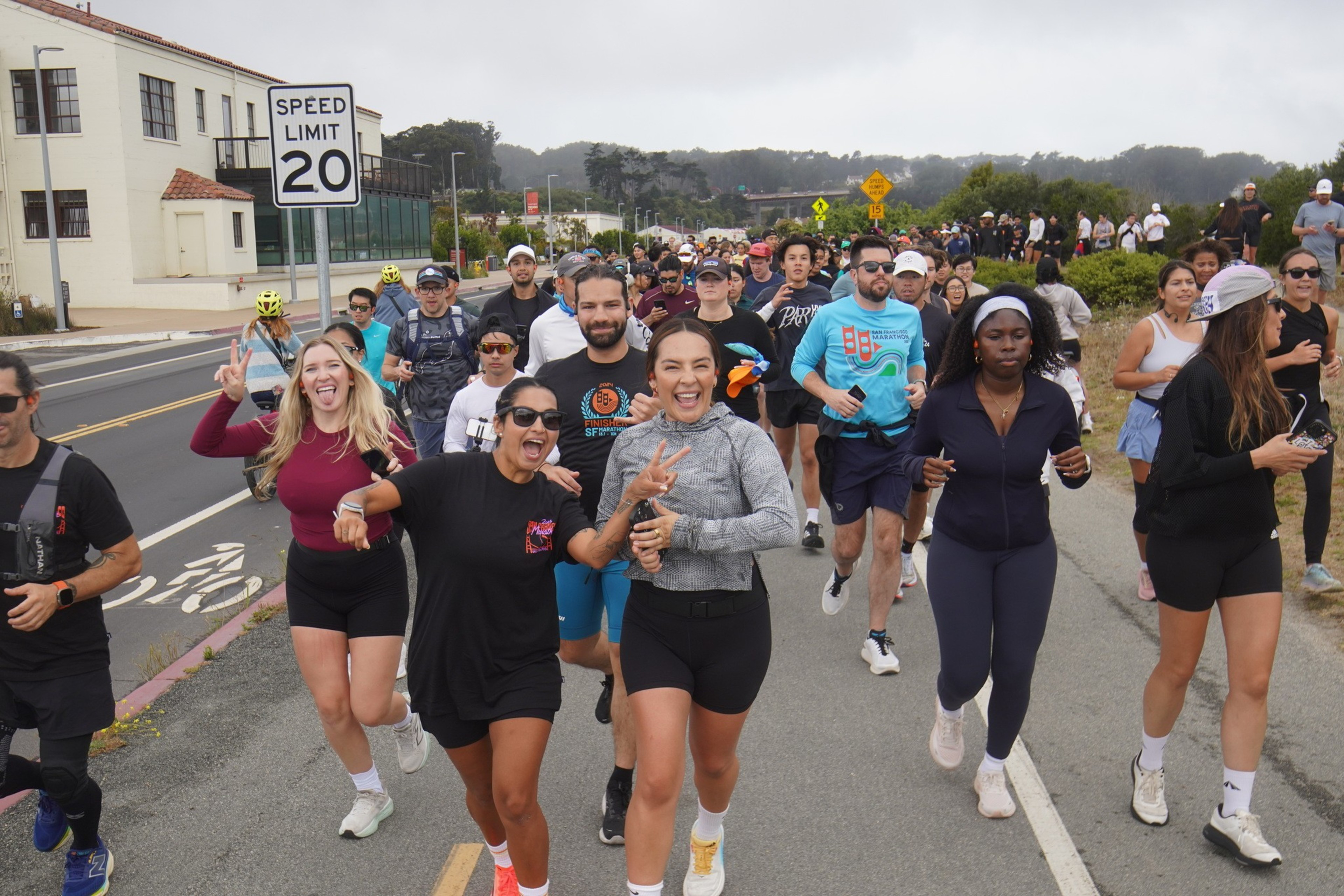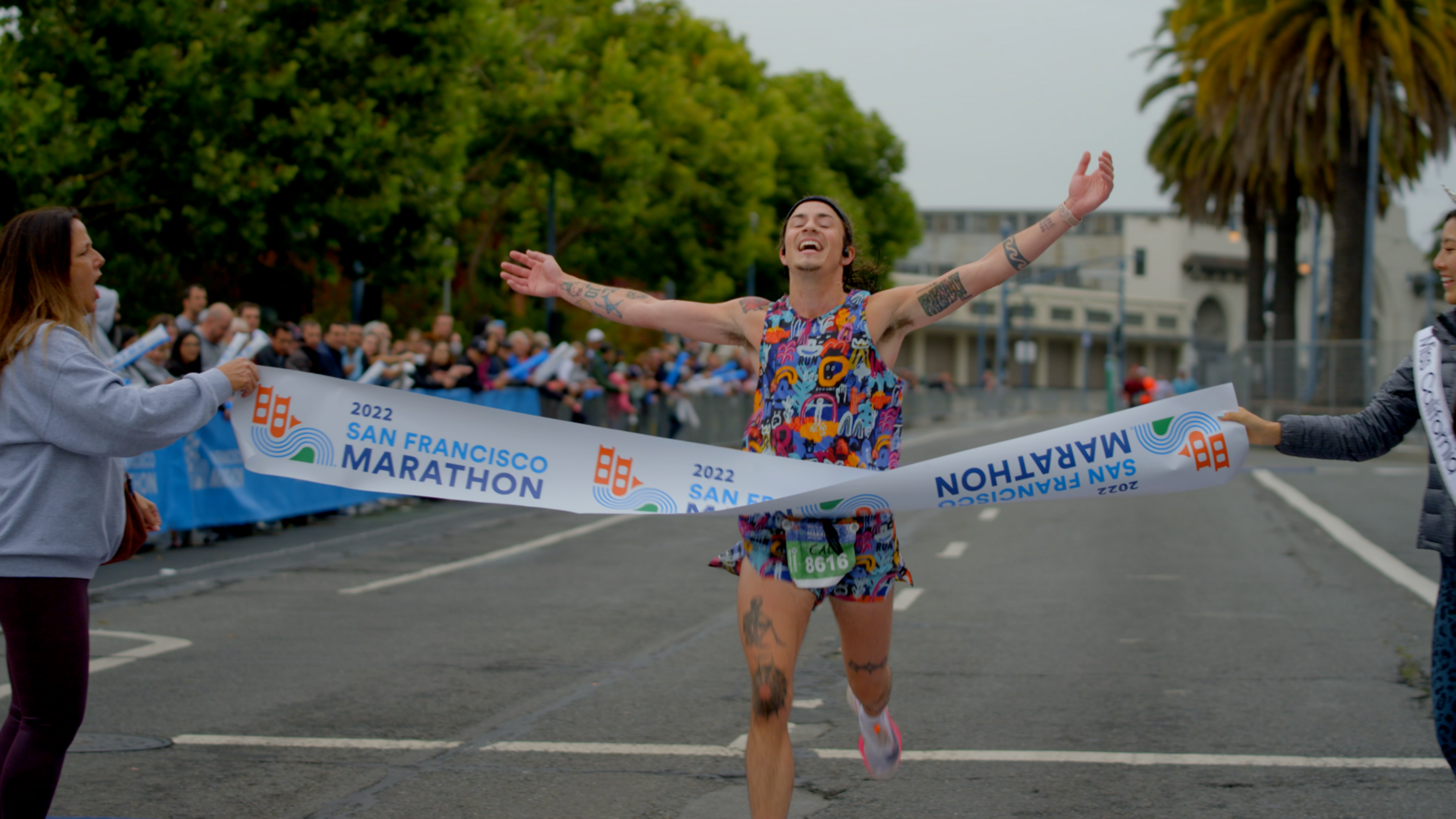Of the 33,000 athletes who registered for the San Francisco Marathon this weekend, more than 200 are running in the nonbinary gender division, one of the first of its kind for any major race.
While Bay 2 Breakers allowed runners to identify as nonbinary during its race in 2022, organizers didn’t offer the age group recognition or prizes reserved for male- and female-identifying runners. Later that year, though, the SF Marathon launched its nonbinary division, complete with all the markings of the other competitive categories.
“It’s not a hard thing to do from a race perspective, in terms of keeping track of overall winners and division winners,” said Lauri Abrahamsen, the marathon’s race director. “You register and you pick who you are, and we track you. It’s not rocket science.”
Athletes say having just two gender categories to choose from, as was the case before 2022, brought about uncomfortable feelings during what is meant to be an inclusive community event.
Mimi Hensel, who identifies as gender nonconforming and is running a full marathon for the first time this weekend, said the nonbinary division isn’t a reason to run the race in and of itself but is a way to do so without feeling forced into binary gender categories.

“It brings so much anxiety and discomfort in trying to go back into the past,” Hensel said. “Just having just a nonbinary division, it’s welcoming.”
The Bay Area has long been a place where people are free to identify however they see fit, which is why it makes sense that it’s where the first nonbinary run club, NBRC (opens in new tab), was founded, in October 2022. The club’s creator, Cal Calamia, had finished first in the SF Marathon’s nonbinary division during its inaugural year a couple of months prior.
“It’s quite simple, you know. We are here, and we want to run,” Calamia said. “Our local race has created space for us to do so, and it just feels really natural and right.”
SF Marathon organizers are keeping up the tradition of inclusivity this year as Calamia forgoes competing in the marathon to guide a blind runner through the race’s 10K.

“It’s a bunch of human beings coming together to spend hours out on a road, enjoying views and, you know, grabbing a medal when you finish,” Abrahamsen said. “That’s really all it is.”
A ban on transgender athletes competing in the Olympics (opens in new tab), along with legislation (opens in new tab) that has singled the group out in recent months, gives this year’s race an added edge. And while runners view the nonbinary division as an important offering, they make clear that they don’t see it as a solution to the debate on whether trans women should compete in women’s sports.
“Having a nonbinary division acknowledges the variance in human beings and our bodies and our genders, and how we express that, and how we live our lives,” Calamia said. “And so it’s more about simplifying and creating choices, so that when people sign up for a race, we’re able to choose what is actually true.”
Avid runner JL Odom is participating in the SF Marathon this weekend for the third year in a row. Since nonbinary divisions became a staple of the biggest U.S. marathons — New York, Chicago, and Boston — Odom has refused to participate in any race that forces them to choose between male and female.

Odom believes the political issues relating to trans rights are all the more reason to “run joyfully, but also proudly.”
“All the training that goes into prepping to run a marathon — the speed work and the trial races — they turn me into a highly resilient person,” Odom said. “So I’m someone who perseveres, and when I encounter adversity, I stand tall, I assess, I rebuild, and then I continue on my set path, with my intended goals.”
Although they are sure they’ll be misgendered by someone at the race — like someone yelling “You go, girl!” at the finish line — Odom won’t let that slow them down.
“I’m wholly comfortable with who I am,” they said. “I lead with that even when who I am and how I identify is met with resistance, misunderstanding, or even dislike.”



